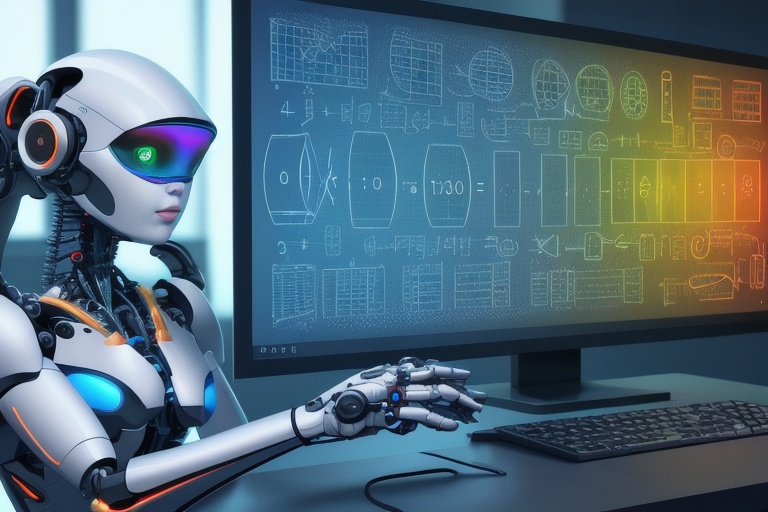The digital age has brought about transformative changes in the way we do business, particularly with the advent of advanced automation systems and artificial intelligence (AI). While these developments hold the promise of greater efficiency, there are pressing concerns regarding their potential to introduce biases into the workplace. It is against this backdrop that the Equal Employment Opportunity Commission (EEOC) has released a milestone document aimed at guiding employers through the nuanced landscape of AI in employment settings. This document, titled "Assessing Adverse Impact in Software, Algorithms, and Artificial Intelligence Used in Employment Selection Procedures Under Title VII of the Civil Rights Act of 1964," is not merely an informational resource—it is a benchmark for organizations to evaluate and ensure that their use of technological innovations aligns with the steadfast principles of equality and fairness enshrined in civil rights laws.
The digital age has brought about transformative changes in the way we do business, particularly with the advent of advanced automation systems and artificial intelligence (AI). While these developments hold the promise of greater efficiency, there are pressing concerns regarding their potential to introduce biases into the workplace. It is against this backdrop that the Equal Employment Opportunity Commission (EEOC) has released a milestone document aimed at guiding employers through the nuanced landscape of AI in employment settings. This document, titled "Assessing Adverse Impact in Software, Algorithms, and Artificial Intelligence Used in Employment Selection Procedures Under Title VII of the Civil Rights Act of 1964," is not merely an informational resource—it is a benchmark for organizations to evaluate and ensure that their use of technological innovations aligns with the steadfast principles of equality and fairness enshrined in civil rights laws.
Understanding the Impact of AI on Employment Selection
As AI systems become increasingly sophisticated, their influence on employment selection processes can be significant. These systems are designed to sieve through applications, automate screenings, and, in some cases, even conduct initial interviews. The inherent risk, however, lies in the potential for these systems to reflect or exacerbate discriminatory practices, inadvertently disadvantaging certain groups in violation of Title VII. The EEOC's document stands as a critical tool for employers to assess the adverse impact these systems might have and take corrective action where necessary.
Following the EEOC's Guidance for Compliance
At the core of the EEOC's guidance is an emphasis on proactive measures. Employers are encouraged to undertake self-analysis and evaluation of their AI-influenced hiring procedures regularly, ensuring that any unintended biases are unearthed and addressed swiftly. The technical assistance document sets forth several key considerations, like validating the AI tools for their intended purposes, scrutinizing differential impacts on demographic groups, and maintaining documentation of the decision-making processes.
Promoting Unbiased Decision-Making Through AI
Deployment of AI in employment decisions should enhance, not hinder, unbiased decision-making. Employers have a responsibility to ensure that the algorithms driving these automated systems are devoid of discriminatory underpinnings. Such vigilance not only upholds the spirit of equal opportunity but also elevates the technological tools to positions of trust and reliability within the recruitment landscape.
Advancing a More Inclusive and Diverse Workforce
Aside from mitigating legal risks, the adherence to the EEOC's guidance can carve a path to a more diverse and inclusive workforce. As employers fine-tune their AI-based procedures, the resulting transparency and fairness can instill confidence among potential hires, welcoming a broad spectrum of talent to the table. In doing so, organizations enrich their creative and intellectual capital, gaining a competitive edge in an increasingly globalized market.
Looking Ahead: AI and the Future of Employment Practices
The future of work is indelibly tied to technological innovation. It is thus imperative for employers to remain at the forefront of emerging trends, consistently aligning their employment practices with current regulatory and ethical standards. Beyond compliance, there is an opportunity to champion diversity and inclusivity through enlightened use of AI tools. This document by the EEOC is a stepping stone to a future where AI serves the noble goal of equal employment for all.
The profound intersection of technology and civil rights law outlined in the EEOC's technical assistance document marks a significant moment for both AI development and employment practices. As employers navigate through new domains of workforce management, harnessing AI for its strengths while consciously mitigating its risks, they stand to cultivate an environment where technology equates to empowerment rather than exclusion. With AI continuously redefining the contours of modern employment, a diligent and knowledgeable approach to integrating these systems will be paramount to achieving a balanced and just workplace.
Information for this article was gathered from the following source.


